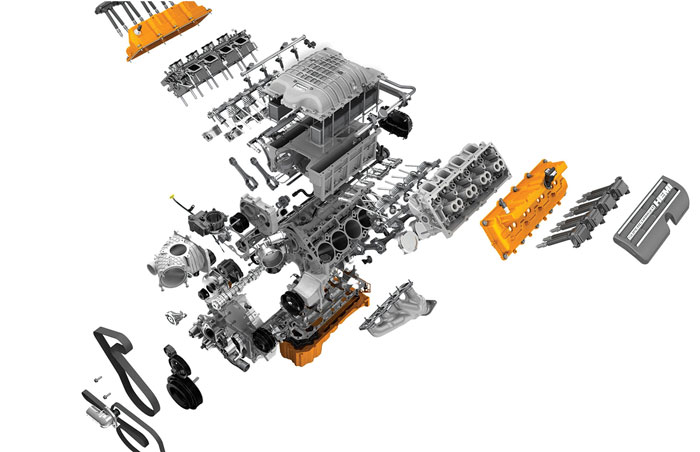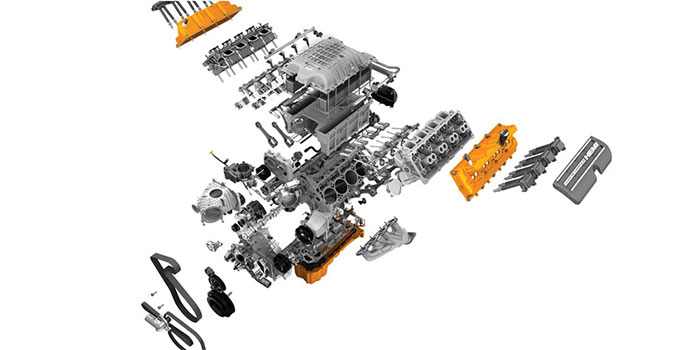 Question: When replacing gaskets on an engine, do I just scrape or peel off the old gaskets, or do I have to do something else?
Question: When replacing gaskets on an engine, do I just scrape or peel off the old gaskets, or do I have to do something else?
Answer: Removing gaskets used to be a fairly simple procedure. Most engines used to have cast iron blocks and heads, with iron manifolds and stamped steel covers. Iron castings could withstand a lot of abuse, so if the old gaskets were stuck in place, you could scrape them loose or grind off the residue. You didn’t have to worry too much about damaging the sealing surface.
Question: On late-model engines, what procedures have changed?
Answer: Today’s engines are different. Most are either “bi-metal” engines with aluminum cylinder heads on cast iron blocks or all-aluminum. Stamped steel valve, oil pan and timing covers are still used, but so are cast aluminum, magnesium and plastic covers. Plastic intake manifolds also are common. These softer materials can’t take the abuse their cast iron ancestors could, so gasket removal requires more finesse rather than brute force.
Use care to avoid scratching, gouging or damaging these parts when gaskets are removed. A small scratch or gouge may not seem like a big deal, but it doesn’t take much of a surface imperfection to create a leak path on many of these engines.
At the same time, gaskets have also changed. Many engines today have soft-faced composition head gaskets with a solid or perforated steel core surrounded by graphite or a non-asbestos material. Some have a slippery “non-stick” coating that improves cold sealing and also makes the gasket fairly easy to remove, but others have a sticky silicone coating that adheres to metal surfaces and is difficult to remove. Many late-model engines also use multi-layered steel (MLS) head gaskets. These gaskets are made of three to five layers of steel and have a very thin rubber coating on the outside to improve cold sealing. The rubber tends to stick to the surface and can be difficult to remove.
MLS head gaskets also require a very smooth, almost polished surface finish to seal properly, which means you have to be extremely careful not to scratch or gouge the surface when replacing a head gasket on one of these engines.
Most cork/rubber valve cover, oil pan and timing cover gaskets have been replaced with molded silicone rubber gaskets (which come off easily but should not be reused), and some covers have no gaskets at all. They are sealed with RTV silicone, which has to be scraped off and replaced with fresh sealer or a gasket when the parts are reassembled.
Question: Can an engine have a bad head gasket, but not leak coolant into the crankcase?
Answer: Yes. If the leak is between cylinders, the gasket may not leak any coolant into the crankcase or cylinders, but it will leak compression between the adjacent cylinders. This will usually cause a steady misfire and a significant loss of power. A compression test or a power balance test can be used to confirm the problem.
This type of head gasket failure may be the result of overheating, detonation or improper torquing of the cylinder head bolts. Any of these may crack or crush the steel armor that surrounds the combustion chamber.
If a head gasket is leaking coolant, the loss of coolant will eventually allow the engine to overheat, which may cause further damage to the head gasket and possibly the cylinder head. An internal coolant leak can be confirmed by pressure testing the cooling system to see if it holds pressure.
Question: What about adding a sealant to the coolant system?
Answer: Adding sealer to the cooling system may seal a few head gasket coolant leaks, but such a product is no help whatsoever if the head gasket has a compression leak between cylinders. Replacing the head gasket is the required fix.
Question: How do I remove difficult gasket residue?
Answer: Many intake manifolds are sealed with gaskets that have raised or printed silicone beads on a metal or plastic carrier. Others have no gaskets at all and just use sealer.
One of the safest ways to remove old gaskets is to spray them with aerosol gasket remover. Give the chemical time to work (usually about 20 minutes), then carefully scrape away the gasket residue with a scraper tool (not a screwdriver) or razor blade.
The trick to properly using a gasket scraper is to scrape at an angle that is almost parallel to the surface. By keeping the angle small, the tip of the scraper will slip under the gasket and shear it away from the surface without digging in. If you try to use it like a chisel, you’ll probably end up gouging the surface and damaging the part.
Using an abrasive pad in a drill to whiz off gasket residue on aluminum or plastic parts is risky because the abrasive pad may remove material that leaves a depression that may cause the replacement gasket to leak.















